
Nature
16:55, 20-Dec-2018
Smiling at danger, China's finless porpoise fights to survive
Updated
15:50, 23-Dec-2018
CGTN
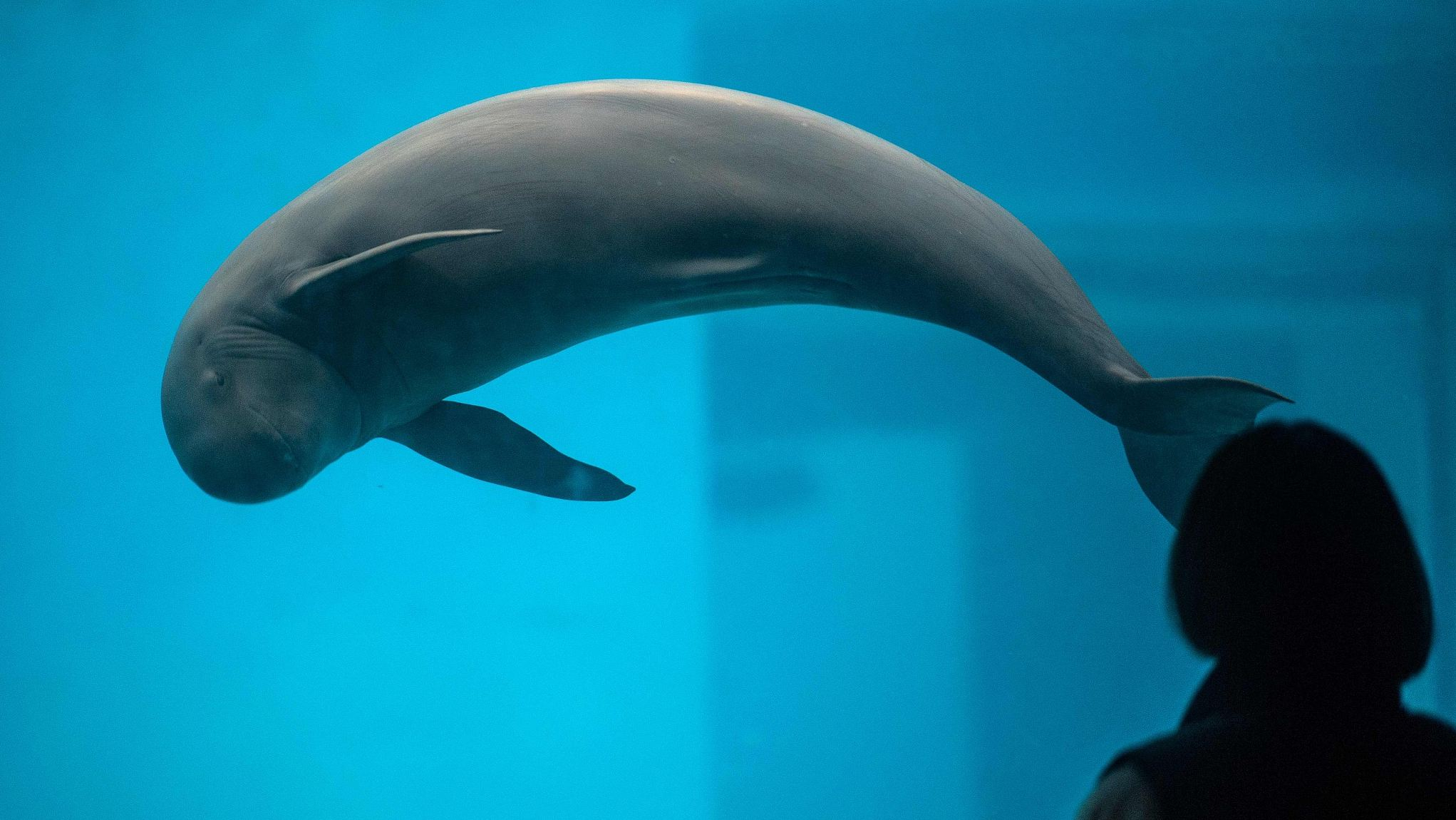
In an oxbow lake along the middle reaches of the Yangtze River, a breathy sigh pierces the surface stillness as one of China's most endangered animals comes up for a gulp of hazy air. A slick black with no dorsal fin arches briefly above the water line before plunging back down.
Known in Chinese as the "smiling angel" for its perma-grin, the shy and rare Yangtze finless porpoise is the only aquatic mammal left in China's longest river.
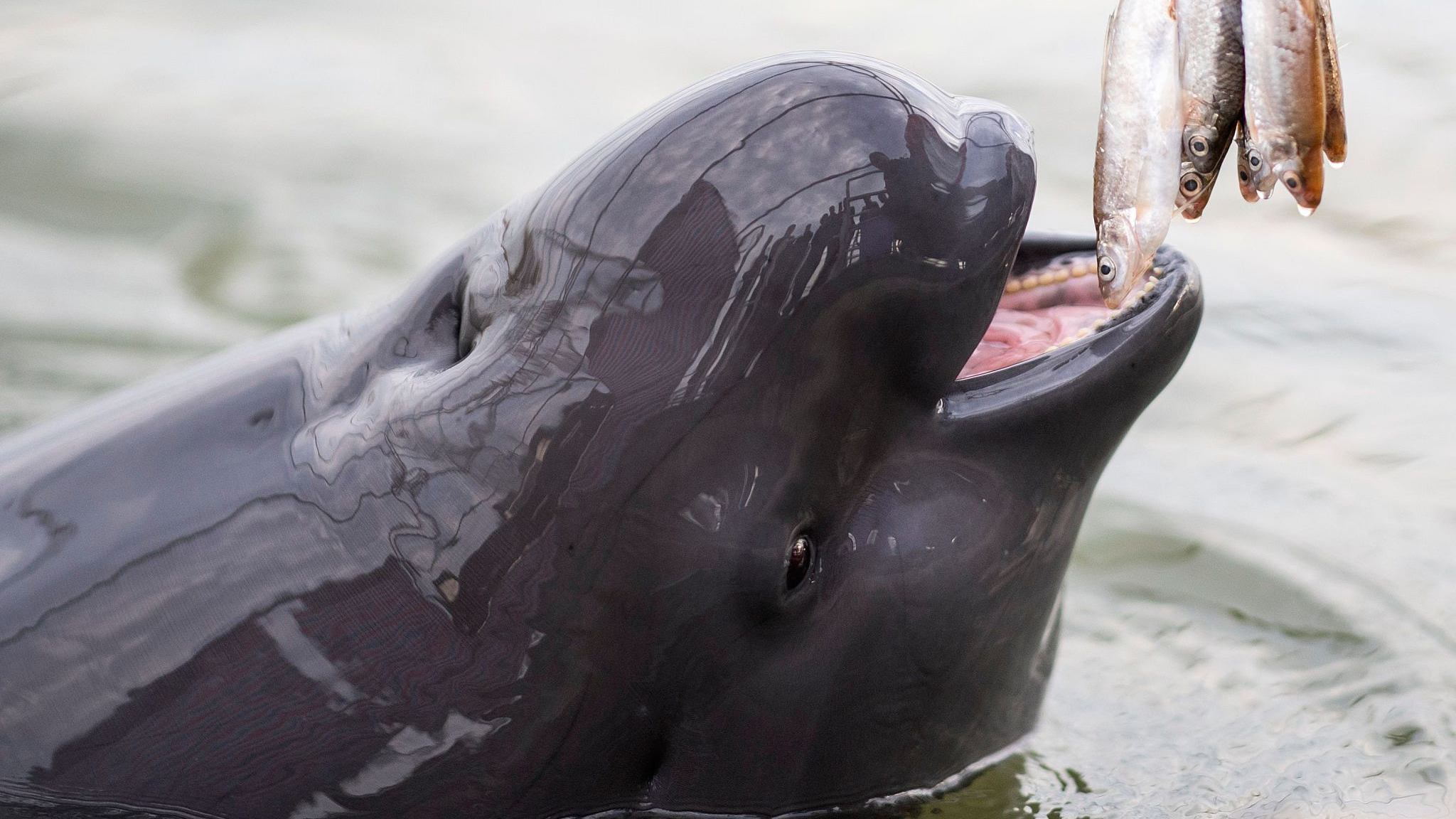
A Yangtze finless porpoise being fed at the Tianezhou Oxbow Nature Reserve in Central China's Hubei Province. /VCG Photo
A Yangtze finless porpoise being fed at the Tianezhou Oxbow Nature Reserve in Central China's Hubei Province. /VCG Photo
Pollution, overfishing, hydroelectric dams and shipping traffic have rendered them critically endangered, worse off even than China's best-known symbol of animal conservation, the panda. The Chinese government estimates there were 1,012 wild Yangtze finless porpoises in 2017, much less than the giant panda, which has a population of more than 1,800, and is no longer endangered.

A finless porpoise is "smiling" in the water. /VCG Photo
A finless porpoise is "smiling" in the water. /VCG Photo
But researchers see signs of hope. Porpoise population fell by nearly half from 2006-2012 to an estimated 1,040. But the rate of decline has slowed remarkably since then, suggesting that conservation efforts have been making progress.
The key of the recovering process is to introduce the porpoises to several conservation areas off the busy river, which then leads to an increasing population, according to researchers.
Encouraging signs
At the Tianezhou Oxbow Nature Reserve, a curving lake linked to the Yangtze by a stream in central China's Hubei Province, there were around 30-40 porpoises in the 1990s. Now, the number has increased to 80.
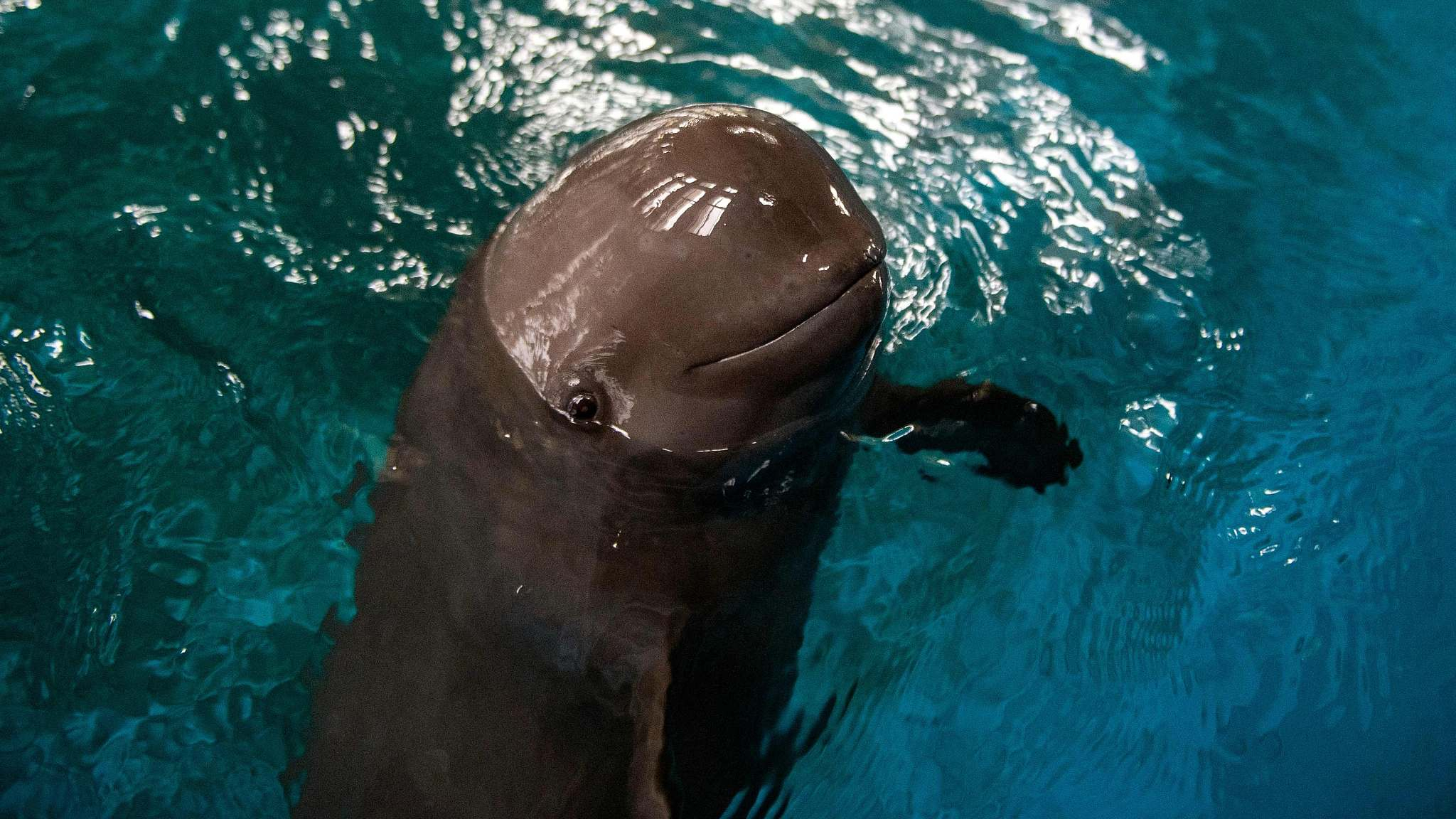
The signature "smile" of the finless porpoise. /VCG Photo
The signature "smile" of the finless porpoise. /VCG Photo
"We found out that animals can not only survive but also reproduce naturally and successfully at Tianezhou. That's very encouraging," said Wang Ding, a porpoise expert with the Chinese Academy of Sciences.
Researchers also credit official clampdowns on polluting activities and fish overharvesting, artificial reproduction projects, and growing environmental awareness among China's emerging middle class.
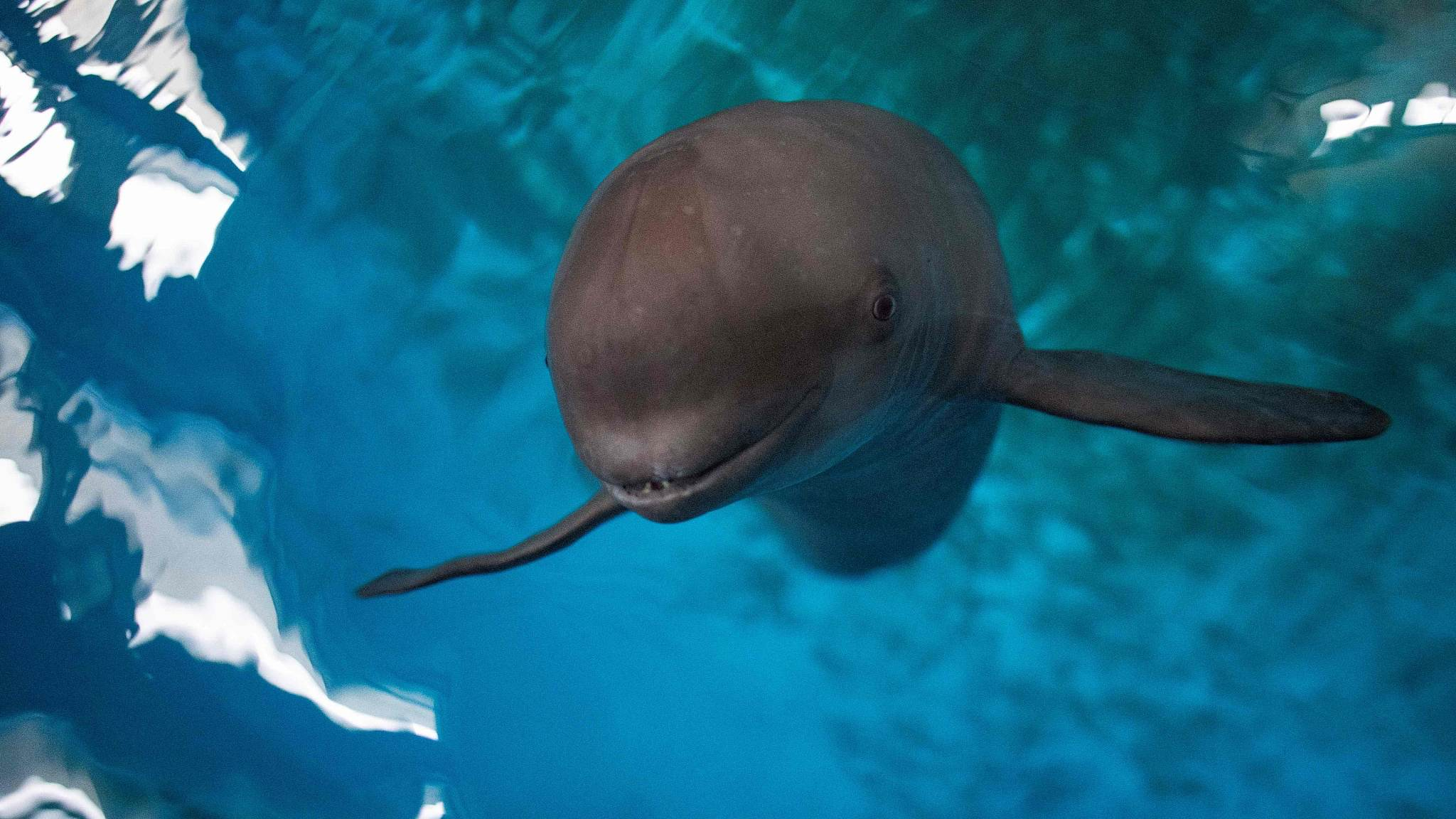
A finless porpoise inside a pool at the Baiji Dolphinarium in Wuhan City, central China's Hubei Province. /VCG Photo
A finless porpoise inside a pool at the Baiji Dolphinarium in Wuhan City, central China's Hubei Province. /VCG Photo
Chinese officials are keen to avoid a repeat of the Yangtze dolphin, which has been considered extinct since 2006. Losing the "smiling angel" would be a further tragedy. One of the world's rare freshwater porpoise subspecies, it is considered a natural barometer of the overall health of China's most important river.
'River pig'
The finless porpoise is depicted as a harbinger of rain in ancient Chinese poems. Some locals call it the "river pig" for its plump body and rounded head. Adults can reach two meters long and typically have light grey color. Some may have lighter patches of skin around the mouth, or darker patches in front of the flippers.
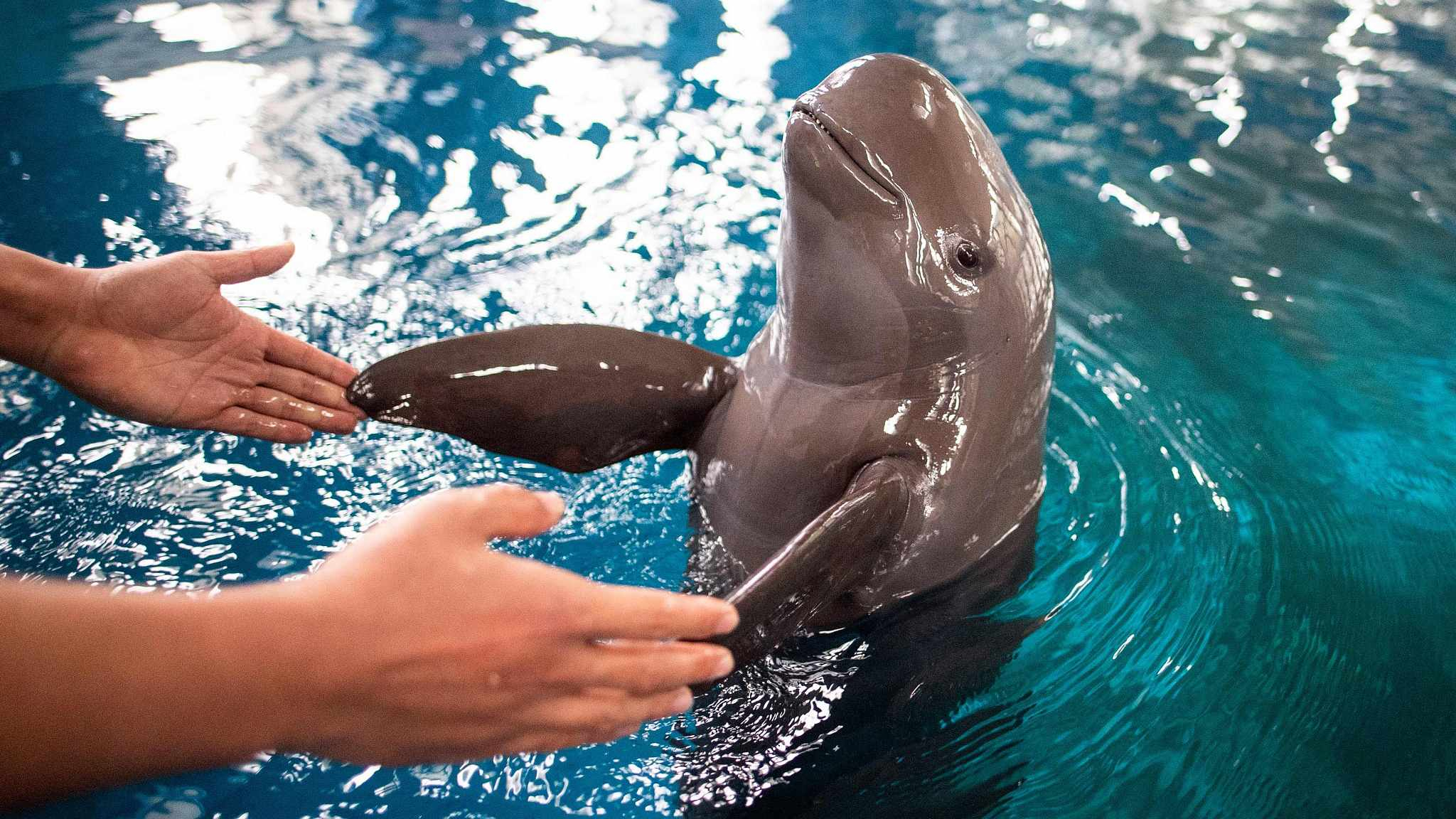
A finless porpoise "shaking hands" with a worker at the Baiji Dolphinarium in Wuhan City, central China's Hubei Province. /VCG Photo
A finless porpoise "shaking hands" with a worker at the Baiji Dolphinarium in Wuhan City, central China's Hubei Province. /VCG Photo
Since China opened up to the world four decades ago, living standards have soared, but so has air and water pollution. In January 2016, President Xi Jinping called for a river protection push. Steps have included curbs on over-development, stricter fishing rules and other protection projects.
Later that year, a formal porpoise action plan was launched, including increased relocation and reserve sites away from the river, and research on artificial breeding. Local fishermen near the lake were encouraged to change professions, with some becoming patrolmen at the reserve.
Source(s): AFP

SITEMAP
Copyright © 2018 CGTN. Beijing ICP prepared NO.16065310-3
Copyright © 2018 CGTN. Beijing ICP prepared NO.16065310-3